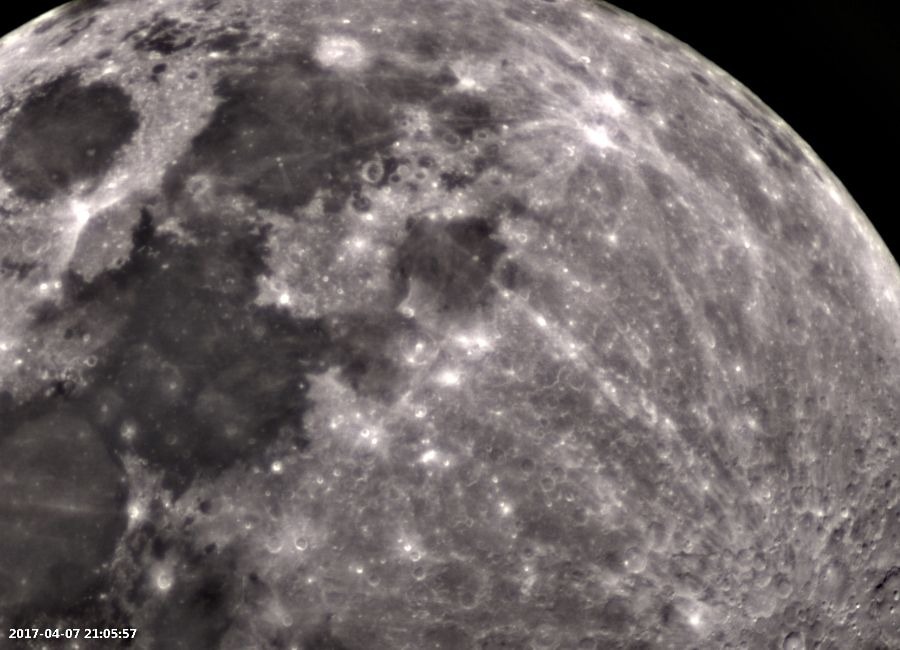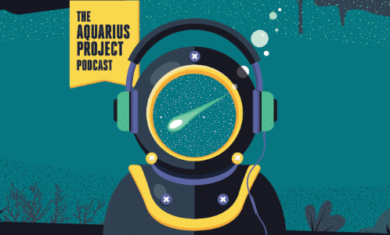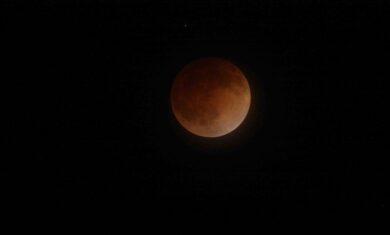Adler Skywatch: July 2019

Header Image: Moon surface taken by the Adler’s Doane Observatory on April 7, 2017.
The nation celebrates the 50th anniversary of NASA’s Apollo 11 mission this month, July 2019. It was 50 years ago on July 20 when humans first set foot on Earth’s natural satellite.
It’s a big month for the Moon astronomically as well. This month, when we commemorate humankind’s first steps on the lunar surface, there are two New Moons—on July 2nd and on the 31st. (Note: New Moons are not ever visible.) The evening of the Full Moon, the 16th, is 50 years to the day since the launching of Apollo 11.
The Moon also plays another special role on the 2nd (though in the daytime sky and in a different hemisphere) when it passes in front of the Sun to cause a total solar eclipse. Unfortunately, this eclipse won’t be visible at all in Chicago, nor in most of the Northern Hemisphere. The path of totality, where the Moon will completely cover the Sun, traces a thin line across the southern Pacific Ocean and through the nations of Chile and Argentina. The area where the Moon only partially covers the Sun will stretch across most of South America and small parts of southern Central America.
During evening twilight in the Chicago area this month, look low in the southeast sky to spot the planet Jupiter. It’s the brightest planet in the night sky this month since the planet Venus rises too close to sunrise to be readily visible. Jupiter is also brighter than any star in the July sky, so it’s easy to spot. This month it’s five to eight degrees to the left of the reddish star Antares, in the constellation Scorpius. The evening of the 13th, Jupiter appears near a waxing gibbous Moon. Jupiter moves low across the southern sky this month, setting in the southwest about 3:30 am CDT at the start of the month and about 1:30 am CDT by month’s end.
The planet Saturn appears about 30 degrees east of Jupiter. At the start of the month, it rises in the east-southeast as evening twilight ends—but by the end of the month, it’s already well above the horizon before sunset. Saturn outshines the nearby stars low in the southern sky this month—only Jupiter shines brighter. The night of the 15th and in particular the early morning darkness of the 16th, Saturn appears less than a degree away from the nearly Full Moon. It’s low in the west-southwest just before the start of morning twilight.
The planets Mercury, Venus, and Mars all appear very close to the Sun this month and thus will be difficult if not impossible to see.
Aphelion, the point in Earth’s orbit when the Sun is at its furthest for the year, falls on July 4th at 6:10 pm CDT. How far away is the Sun from Earth at aphelion? It’s roughly 94-million miles distant. By comparison, at perihelion—when the Earth is closest to the Sun—we are about 91-million miles away. Perihelion occurred earlier this year, on January 2nd.
The annual Southern Delta Aquarid meteor shower peaks in late July. This year the peak is expected around the 28th. The southern hemisphere is actually the best place to see this meteor shower; so from our northern-hemisphere location, only a handful of meteors might be seen from a dark sky location, far from city lights. The best times to try spotting these quick streaks of light in the night sky are the hours after midnight and before morning twilight. The shower’s peak falls only a few days before New Moon, so the night sky will indeed be dark—as long as you’re far away from artificial light, which washes-out all but the brightest meteors. From light polluted urban or suburban skies, this shower may not be visible at all.
New Moon: July 2nd and 31st
First Quarter Moon: July 9th
Full Moon: July 16th
Last Quarter Moon: July 24th
Please note: these descriptions are for the Chicago area, using Central time.







